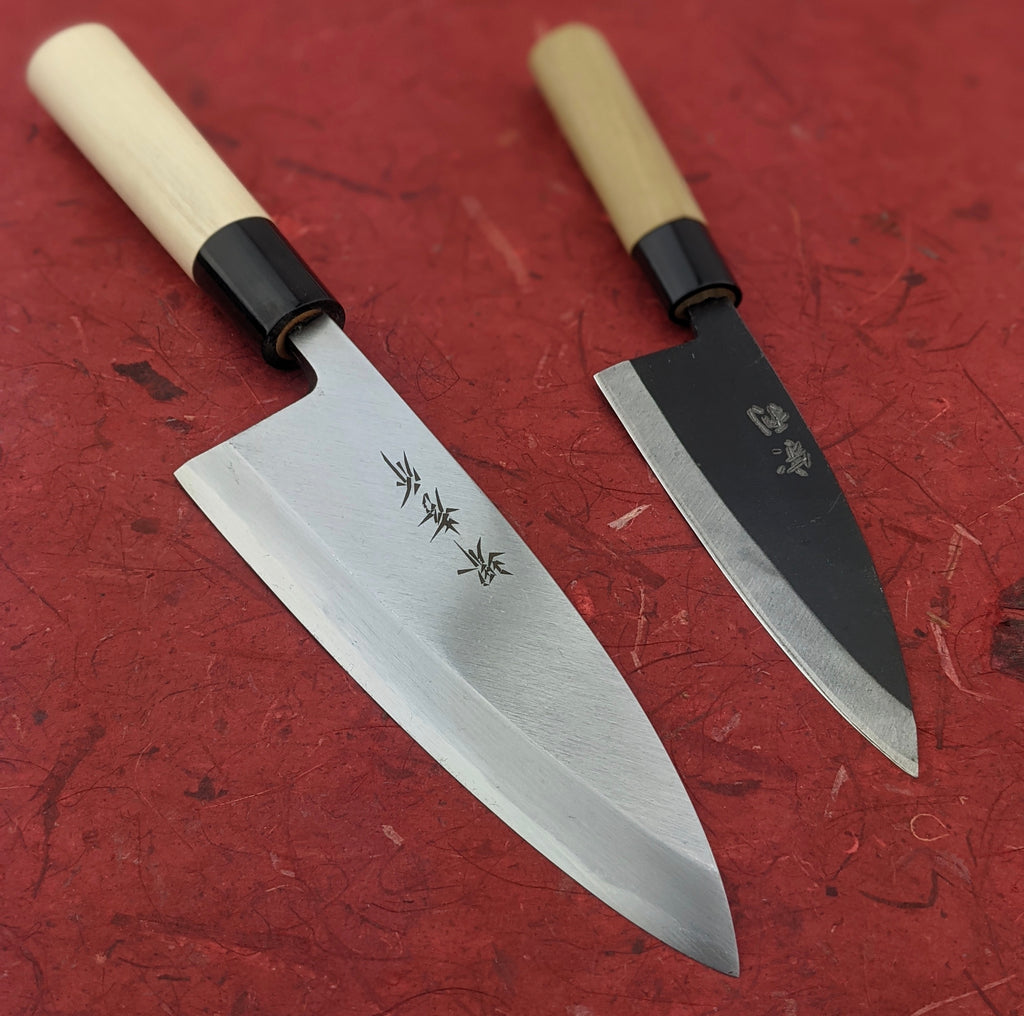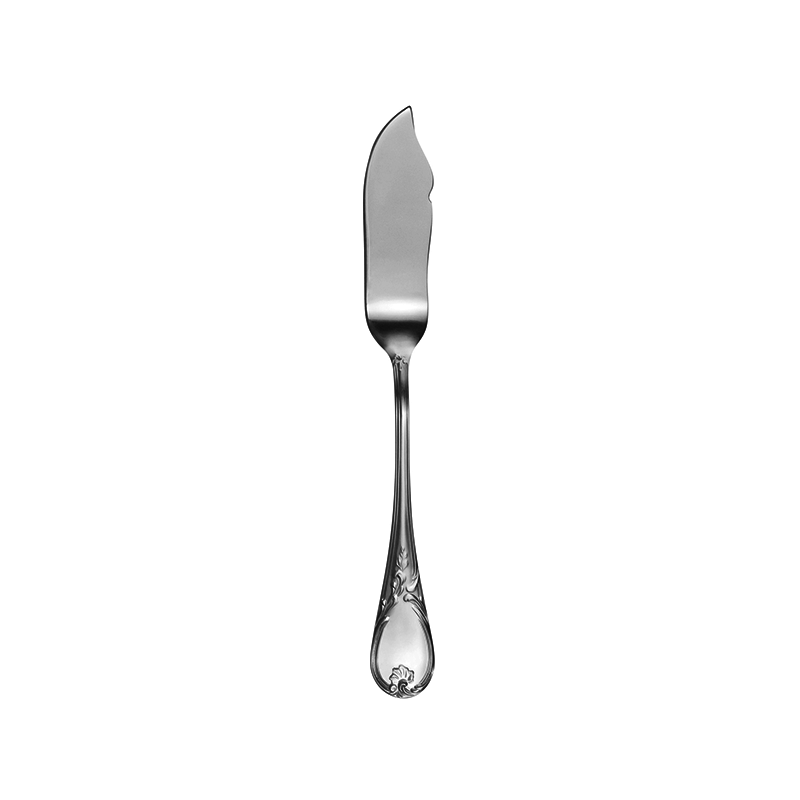Discover the Vital Attributes to Try To Find in a Top-Quality Fish Knife
When choosing a fish knife, numerous vital attributes demand attention. The blade product significantly impacts longevity and sharpness, while flexibility plays a critical function in accuracy. Additionally, the handle design affects comfort during prolonged usage. Edge retention and safety and security features are additionally important for functional use. Recognizing these components will certainly lead customers towards making an enlightened selection, yet the nuances of their significance may not be immediately clear.
Blade Material and Building And Construction
The performance of a fish knife mainly hinges on its blade product and construction - fish knife. Top notch fish blades typically feature blades made from stainless-steel, high-carbon steel, or a mix of both. Stainless-steel is preferred for its corrosion resistance and low upkeep, making it optimal for freshwater and deep sea environments. High-carbon steel, while vulnerable to rusting, supplies remarkable sharpness and edge retention, appealing to those that prioritize reducing efficiency
The building of the blade also plays an important role in its performance. Full-tang blades, which extend the whole size of the deal with, supply enhanced strength and balance. On the other hand, partial-tang blades might endanger sturdiness. In addition, the density of the blade should be taken into consideration, as thinner blades permit for more accurate cuts, vital for fragile fish filleting. Ultimately, a well-constructed blade, utilizing the appropriate products, is fundamental for attaining the very best outcomes when preparing fish.
Blade Versatility and Length
Blade adaptability and size are critical aspects that considerably affect the performance of a fish knife. An adaptable blade permits for accurate cuts and the ability to steer around bones and skin, making it important for filleting fish properly. The right amount of versatility can boost control, allowing the customer to achieve clean, smooth cuts with very little effort.
In terms of size, fish knives normally vary from 6 to 9 inches. A longer blade is advantageous for bigger fish, offering the reach needed for efficient filleting. Alternatively, a shorter blade offers maneuverability, making it ideal for smaller sized fish or intricate tasks.
Inevitably, the selection of adaptability and size should line up with the particular angling needs and choices of the individual. A well-balanced combination of these qualities ensures ideal performance, enhancing the general fish prep work experience.
Handle Style and Convenience
A properly designed handle is crucial for guaranteeing comfort and control when utilizing a fish knife. The manage need to fit safely in the hand, enabling a firm grip during elaborate tasks such as filleting or skinning fish. Materials like rubber, wood, or composite offer various degrees of convenience and traction, influencing the individual's experience.
Ergonomic functions are likewise critical; contours that adhere to the all-natural shape of the hand can reduce tiredness throughout extended usage. In addition, the take care of's structure plays a considerable function in protecting against slippage, specifically when collaborating with damp hands.
Weight circulation is one more aspect that adds to the general balance of the knife, enhancing maneuverability. A comfy manage style not only improves performance yet likewise advertises safety and security, as a safe and secure grasp lessens the risk of accidents (fish knife). Eventually, a thoughtful take care of style can substantially raise the effectiveness of a fish knife in cooking applications
Side Retention and Honing
While using a fish knife, preserving a sharp edge is important for achieving clean cuts and specific filleting. A quality fish knife must display exceptional edge retention, permitting it to remain sharp with several usages. This characteristic is frequently determined by the sort of steel used in the blade; high-carbon stainless-steel is frequently favored due to its balance of hardness and rust resistance.

Safety And Security Features and Sheath Options
When selecting a fish knife, many safety and security features and sheath options are essential considerations. A protected and ergonomic manage decreases the danger of slides throughout use, enhancing customer safety. Distinctive grasps and finger guards even more prevent mishaps, permitting far better control while filleting fish.
Furthermore, a blunt tip can decrease the danger of leak injuries, making it a safer choice for newbie individuals.
Sheath options also play an important duty in safety. A properly designed sheath safeguards the blade, stopping accidental cuts when the knife is kept or transported. Sheaths made from sturdy products, such as nylon or hard plastic, offer included defense against ecological components.
Some sheaths include belt clips or loopholes, making sure the knife is easily available while remaining safe. Ultimately, prioritizing security features and sheath choices adds significantly to the total performance and individual experience of more info a fish knife.
Regularly Asked Concerns
What Is the Best Brand Name for Fish Knives?
The most effective brand for fish knives commonly varies by choice, but prominent names like Wüsthof, Victorinox, and Avoid are frequently suggested for their durability, workmanship, and sharpness, making them top options among cooking fanatics and professionals alike.
Can Fish Blades Be Used for Other Kinds Of Fish?
Fish blades can undoubtedly be used for other kinds of fish. Their style and sharpness make them flexible enough for various fish species, boosting the total experience of filleting and preparing various kinds of fish and shellfish.

Just how Do I Tidy and Keep My Fish Knife?
To cleanse and maintain a fish knife, wash it with warm water after usage, carefully scrub with mild soap, dry extensively, and store in a safety sheath to avoid damages and deterioration. Regular developing is necessary.
Are There Fish Blades Particularly for Left-Handed Users?
Yes, there are fish blades made particularly for left-handed individuals. These blades include reversed blade angles and ergonomic takes care of, making sure comfort and performance for left-handed individuals while filleting and preparing fish. Quality options are offered from different makers.
What Is the Price Variety for Quality Fish Knives?
Quality fish blades normally vary from $20 to $150, depending upon products, brand name online reputation, and craftsmanship. Higher-end choices may feature specialized designs and premium functional designs, while affordable selections still supply acceptable efficiency for informal customers.
The efficiency of a fish knife mainly hinges on its blade material and building. High-grade fish knives commonly feature blades made from stainless steel, high-carbon steel, or a mix of both. Blade versatility and size are essential elements that greatly influence the efficiency of a fish knife. Fish knives can indeed be used for various other kinds of fish. These knives include reversed blade angles and ergonomic manages, guaranteeing comfort and efficiency for left-handed individuals while filleting and preparing fish.